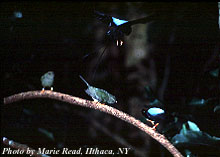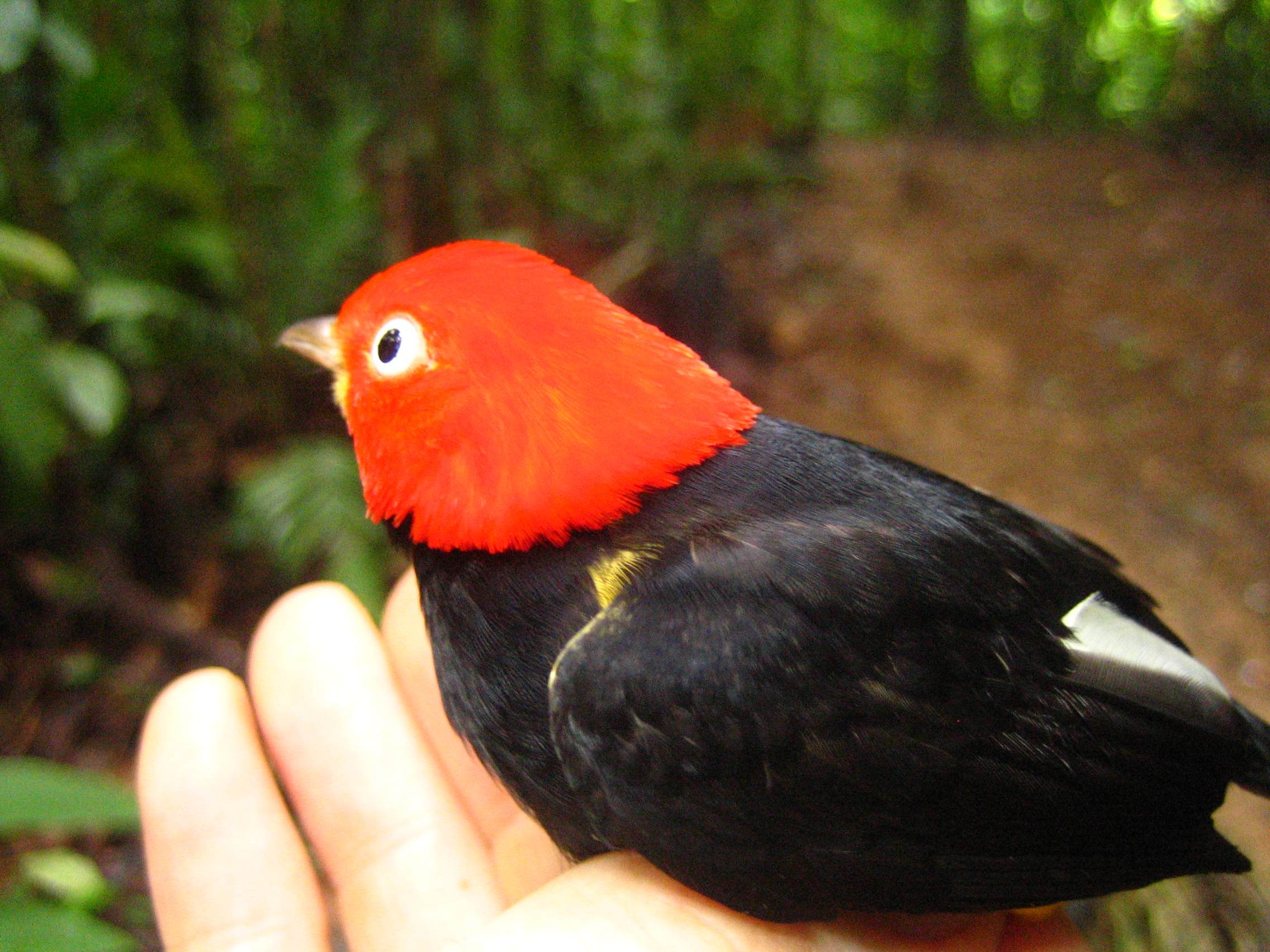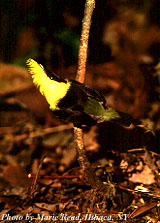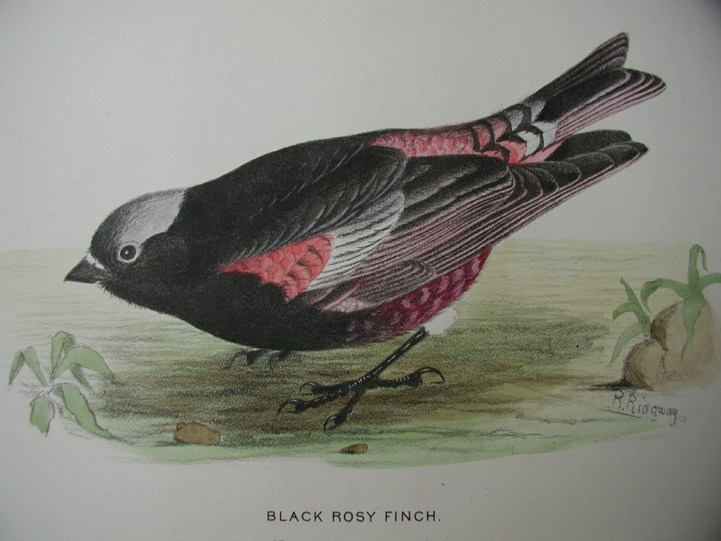 View video of manakin dance
View video of manakin dance My students, post-docs and I study behavioral and evolutionary ecology, using a combination of social network models (using R scripts) and detailed behavioral studies of individually-marked individuals. I have become fascinated with social network models -- for example, using a male's past social interactions to predict his eventual fate (five years later) in Long-tailed Manakins. Since 2013, my students and I have been studying a color-marked population of Golden-winged Manakins (Masius chrysopterus) at the Milpe Reserve on the west slope of the Andes in Ecuador. Very recently, we have used high-speed video (with Edgertronics cameras) to analyze the movements of the highly acrobatic log-approach display (the human analog would be a full front layout with half twist, in gymnastics). My Fulbright-supported sabbatical (2017-2018) provided a unique opportunity for my students and I to spend time in the field during the North American autumn (Sep-Dec), the height of the mating season for the Golden-winged Manakins. Nick Oakley and recent Bowdoin graduate Liam Taylor collected a huge amount of video data on the marked birds. Liam wrote R scripts to detect motion in the footage, thereby hugely reducing the time needed to analyze the footage, and making it feasible to do instant field checks for interesting activity or new arrivals of color-banded birds. I have also recently adapted metrics from the population genetics literature to aid in the analysis of edge-weighted networks.
See Ecuador page for more details on current projects and travel and study opportunities
Past projects include using ERGM techniques to derive assembly rules for the social networks of Long-tailed Manakins (with my post-doc Andrew Edelman). My post-doc, Dai Shizuka, and I used social network approaches for the study of dominance relations -- their transitivity, stability and orderliness. My student Brandon Munk and I did a comparative study of hippocampal development (spatial memory processing) in four species of manakins -- Chiroxiphia linearis, Manacus candei, Pipra mentalis and Lepidothrix coronata. Viva Emlen and Oring 1976! Ecology really does drive weird variations in mating systems.

Male Red-capped Manakin, Pipra mentalis, Costa Rica.
Pipra has a medium-sized hippocampus
(larger than that of Lepidothrix but smaller, of course, than Chiroxiphia).
Less active parts of my research program include molecular genetic techniques, matrix-based demographic modeling (mostly using Mathematica™), the role of the hippocampus (the part of the brain that mediates the processing of spatial memory) in the evolution of cooperative courtship in manakins, conservation genetics of the Wyoming pocket gopher (Thomomys clusius) and Oreohelix land snails, reticulate evolution in threatened native bluehead and flannelmouth suckers (fish in the genus Catostomus), black-footed ferret demography, and various aspects of the biology of Black Rosy-Finches, Leucosticte atrata, and Brown-capped Rosy-Finches, L. australis. Photos of rosy-finch fieldwork
Past molecular projects include Boreal Owls, black bears, Burrowing Owls, Florida Scrub-Jays, and Long-tailed Manakins.
My demographic interests focus on life history evolution, particularly in the context of social behavior. Demographic projects include stage-classified matrix population models for socially structured populations (e.g., cooperative breeders, where social status not age determines demographic performance), demonstration of actuarial senescence in bird populations, and the relationship between life history variation and mating systems (e.g., age of first reproduction and longevity in lek-mating birds), and long term demographic data from birds in East Africa. I also conducted experimental presentations of taxidermic mounts in the zone of introgression between White-collared Manakins, Manacus candei, and Golden-collared manakins, M. vitellinus (the elegant animal photographed below left by Marie Read) near the Panamanian-Costa Rican border. The manakin studies integrate my diverse interests in mating systems, genetic structure, hybrid zones, evolutionary demography and conservation.
 <---------------------------------------------->
<---------------------------------------------->
I love living in the least populated state in the nation (~ 0.5 million), at 7,200', in the high short-grass prairie, and at one of the most compelling biogeographic crossroads I have ever encountered. Laramie now has two (!) Thai restaurants, and Manu Chao and Lucinda Williams have each played in Denver twice recently! My only regrets are that Walter Anderson didn't paint a Long-tailed Manakin (though he did spend some time in Costa Rica ...), and that Junior Kimbrough died before I could see him live.
Return to McD's home page